After a fine day tasting the white and rose wines from Luberon and Ventoux, our focused on Cairanne, the newest Southern Rhône Valley Cru. Cairanne was granted Côtes du Rhône status in 1953 and became a Côtes du Rhône Villages appellation in 1967. In 2008, an application was filed to the INAO to grant Cru status to Cairanne. Denis Alary, a man who I had lunch with later in the day, was a major driving force behind the push to have Cairanne elevated to Cru status. After more than 15 years of hard work, Cairanne was finally granted Cru status in 2016, beginning with the 2015 vintage.
It was another early start on Tuesday morning. After about half an hour of driving we arrived at our first winery of the day - Domaine Oratoire Saint-Martin. I was excited to visit this Domaine as I had done some research prior and discovered that they had some quality wines, some of which had previously been available in Ontario and Québec. The vineyards on this land have been cultivated by grape growers for 10 generations over 300 years. Today, this organic and biodynamic winery is owned by two brothers, Frédéric and François Alary.
We met Frédéric, who was unfortunately nursing a broken arm, and got a brief tour of the small production facility. It was interesting to see many different types of fermentation tanks for such a small winery - they definitely like to experiment and try different things to best express their wines and terroir. They have 25 hectares of vineyards, with 20% planted to white wine varietals - a fairly high percentage given that the average per producer is only 5%. After tasting through their wines, I can see why they produce more white wines than the average Cairanne winery. The whites showed elegance, freshness, and richness, with an ability to age well, as we discovered when we tasted the 2008 Haut Coustias Blanc (91 pts). The term "Coustias" translates into "bad earth", but for wine, this is very much a good thing. Domaine Oratoire Saint-Martin stopped producing rosé wines in 2009, as they were too heavy, so we only tasted white wines. and a few other surprise wines including a lovely 2000 Cuvée Séraphine Blanc dessert wine that was made with late harvest & dried grapes.
The second stop of the day was a short drive to Domaine Boisson, another small, family-owned and -operated winery. It was founded by current owner Bruno Boisson's great grandfather in the middle of the 19th century from 6-8 hectares of vines. In 1957, Bruno's grandfather, René, expanded the winery to 28 ha, of which 15 ha are in Cairanne. They began producing their own wines under the Domaine Boisson label in 1986. While Bruno and his father Régis Boisson produce wines using their own vision, training, and experience, vinification is supervised by highly-acclaimed oenologist Philippe Cambie. Cairanne appellation rules specify that white wines must contain at least 2 of Grenache Blanc, Clairette, Marsanne, Roussanne, Bourboulenc and Viognier, and rosés must be a blend of a minimum 50% Grenache Noir and at least 20% Syrah and/or Mourvèdre. This suits Domaine Boisson perfectly as their Cairanne vineyards have various types of soils and exposures, allowing them to create a variety of blends.
Domaine Boisson has 3 main types of terroir on their properties: Les Sablières - a covering of clay and sand of varying thicknesses dating from the Miocene period, supported by a subsoil of grey sand; Les Garrigues - scrublands with shallow soil of ancient flat terraces from the Quaternary period; Les Côteaux - beds of stony soil of varying thicknesses, alternating with layers of calcareous clay coloured light yellow, grey and white, and mostly south-facing. Since the weather was nice, Bruno was kind enough to take us to one of his hilltop vineyards, as well as a castle where we got a lovely view of Cairanne and the Rhône Valley. All of the wines are fermented using natural yeasts and the winery is in the process of converting to certified organic. Of their total production, 12% is white wine and 6% rosé, and we tasted everything available - 3 whites and 1 rosé.
Lunch was a short drive away at Côteaux et Fourchettes, a nicely appointed restaurant situated on the country side in Cairanne. It was a fine, hot and sunny day, so we sat outside on the patio and were joined by winemaker Caroline Moro and the one and only Denis Alary.
The Alary family's involvement in viticulture and wine production dates back to 1692, during the reign of Louis XIV. Amazingly, the first agricultural land-register of Cairanne dates back to 1414, when there were 100 parcels of vineyards. Tradition and passion are key elements to tendering and maturing wines within the Alary family, with experience being passed on from one generation to the next - now spanning 10 generations. Over the years, they have learned to understand their terroir in Cairanne. Most of the vines at Domaine Alary are south-facing, with terroir consisting of white and blue clay soils on the slopes, 'Garrigues' on the lower terraces, cobbles covering underlying white and red clay on the high plateau, along with the richer soils close to the Plan de Dieu. They have been making white wines for over 150 years and currently have a total of 5 ha planted to five varietals that are always vinified separately before blending. Today, Denis Alary represents the 10th generation of the Alary family and personally manages all aspects of the Domaine with the assistance of two employees.
Mr. Alary is also an idealist who dreams of improving things and people, and is the reason why he pushed himself to accept the management position of the Cairanne Trade Union more than 20 years ago. He was a very important piece in the pursuit of Cairanne achieving Cru status and is always looking to improve. As leader of the Trade Union, he searches until he finds consensus. Thus, the rules governing Cairanne appellation white wines which specified that Clairette, Grenache Blanc, and Roussanne must make up at least 70% of the final blend will be grandfathered in until 2023 to allow grape growers the time to establish the necessary yields. Over the course of lunch, I also learned that only 5% of all wine production in Cairanne is currently devoted to white wines, but Mr. Alary expects it to increase to 10% within the next five years. Listening to Mr. Alary speak, I sensed that he is a determined man that is also patient and considerate of others. As we tasted only a few delicious wines from the Alary portfolio, a visit to the Domaine in the future would surely be a special treat.
Caroline Moro is the winemaker at Les Grandes Serres, a negociant firm that was founded in the Southern Rhône Valley in 1977 by Michel Picard who is an owner that is also associated with producing wine in Burgundy. The winery is based in Châteauneuf-du-Pape, but they also have vineyards in Gigondas and Cairanne. Additionally, they have formed strong ties and partnerships with key players in each appellation, including a Cairanne winery and numerous wine domains in order to secure the best possible grapes.
After lunch, we visited Domaine Rabasse Charavin, another family-owned and -operated winery that has been passed on from generation to generation. The history begins in 1890, when Edmond Rabasse, the great grandfather of current owner Corinne Couturier, purchased a cottage and the 3 ha of land surrounding it. Around 1925, his son Marcel Rabasse took over the land and added 5 ha of vineyards and olive groves. In 1950, Jeanine Rabasse (Corinne's mother) married Abel Charavin, and together they gave this small estate a new focus on winemaking. Corinne took over the reins in 1984, and was joined by her daughter Laure in 1993. Together, they form a unique mother-daughter winemaking team that tends to 40 ha of vines, all of which are handpicked. Domaine Rabasse Charavin practices organic & sustainable winemaking, and all of the wines are vegan-friendly. 5% of their production is devoted to white wines, most of which come from Cairanne. I wasn't too familiar with the Bourboulenc varietal, but I found it interesting to learn here that this grape is more oval-shaped (instead of round), tends to spread out when it grows, and also lowers the alcohol in wine blends due to the grape's low sugar content. We didn't visit the vineyards here, but after tasting through the wines with Laure and Corinne, we stepped out onto the veranda for a lovely view of the Cairanne landscape.
The last winery visit of the day was Domaine Brusset, a family estate that was established in 1947 by the late André Brusset. Prior to founding Domaine Brusset, André had grown grapes since 1929 and was a founding member of the cooperative of Cairanne. Together with his son Daniel, and his grandson Laurent, they formed three generations of winegrowers and winemakers. The three generations combine traditional winemaking with new techniques that were introduced by each generation of winemaker. Today, the Domaine Brusset estate covers 70 ha of vines across 5 appellations, nearly 40% of which are in Cairanne. Not surprisingly, their headquarters and main production facility is also in Cairanne in the heart of the southern Côtes du Rhône valley vineyards. Less than 10% of their production is devoted to white and rosé wines. We tasted the single rosé, which represented 2% of their entire production, and both whites that were available for tasting with Laurent.
We travelled about 1 hour to Nîmes and checked-in to Appart'City Nîmes Arènes - Appart Hôtel - a fine, modern hotel located across the vibrant Esplanade Charles-de-Gaulle and steps from the imposing Arènes de Nîmes (Roman amphitheatre). After freshening up, we were picked up by Henri-Claude Amadieu and headed out for dinner at Bistr'AU - a casual (yet, quite fine) dining spot that was located just outside the city centre.
Henri-Claude is the Head of Sales at the family-owned and -operated Pierre Amadieu, a winery based in Gigondas. He is also the cousin of Pierre Amadieu and one of a number of relatives that are involved in this family winemaking business. Pierre is the grandchild of Pierre Sr. and is the head of the company. He is also a winemaker and joined by his winemaker cousin Jean-Marie, uncle Claude who runs the vineyard, and Henri-Claude's sister (Marie) who is in charge of private customers and the cellar door.
The history of this important estate began with Pierre's grandfather, the original Pierre Amadieu, as a wine grower of 7 ha of vineyards in Gigondas in 1929. They pursue the long-established family tradition of respect for the soil, landscape, and vines in order to produce wines that reflect their unique terroir. Pierre Sr. was a pioneer in the region. In 1945, he built an underground cellar two levels deep to ensure constant temperature and hygrometry, and ten years later, he purchased an old railway tunnel near Pierrelongue (Drôme) that allowed for exceptional ageing. Henri-Claude informed us that the underground cellar is now closed, but suggested that if we were to visit the winery, we might be able to get a look at the impressive cellar. In the 1950's and 60's, Pierre Sr. also practised sustainable farming with up to 1200 sheep that provided natural manure for soil fertilization and also manage cover crops. Today, Pierre seeks to improve the wines with each vintage, looking for elegance and freshness, while also working the vineyards as naturally as possible. While Pierre Amadieu is mostly known for their estate-owned wines from Gigondas, they also work with growers throughout Southern Rhône and produce fine wines from Cairanne, Ventoux, and Tavel, some of which we got to taste at this dinner. Henri-Claude brought many wines to taste, including some exciting back vintage wines that were tasting great! Wine reviews of a couple of my favourite white wines are provided below.
After dinner, Henri-Claude was kind enough to give us a quick driving tour through the city centre of Nîmes. I was pleasantly surprised by the many historical structures found in Nîmes and I can definitely foresee myself visiting the city and spending some time here again, perhaps as a stepping stone to visiting Pierre Amadieu, an hour's drive northeast from here.
After two days of tasting white and rosé wines from Luberon, Ventoux, and Cairanne, I was very impressed with the the appellation wines. The rosé wines from Cairanne producers were pleasing, however, they were not labelled as Cairanne because they did not conform to appellation rules for rosé wines, thus, they were labelled as generic Côtes du Rhône bottles. My view of traditional whites from Southern Rhône prior to this trip consisted of blends made with Marsanne, Roussanne, and Viognier. However, this view was being completely shattered as Clairette and Grenache Blanc were playing very significant roles in the final blends. The quality is good, and the prices are quite affordable. I was very much looking forward to tasting the wines of Costières de Nîmes on day three.
Tasting Notes:
DOMAINE ORATOIRE SAINT-MARTIN RESERVE DE SEIGNEURS CAIRANNE BLANC 2017 - AOP, Rhône, France (XD) - 13.50 €40% Clairette, 30% Roussanne, and 30% Grenache Blanc. Elegant, medium intensity nose is clean with lemon citrus, herbs, fennel, and grassy aromas. It is medium bodied and creamy with nice, clean aroma replays plus a fine mineral note. Clean, balanced acids and a touch warm on the long finish. Score: 89 pts
DOMAINE ORATOIRE SAINT-MARTIN HAUT COUSTIAS CAIRANNE BLANC 2016 - AOP, Rhône, France (XD) - 19 €
From 70-90 year old vines, blend of 40% Clairette, 20% Marsanne, 20% Roussanne, and 20% Grenache Blanc. The clairette and Grenache Blanc were fermented in concrete egg, while the Marsanne and Roussane were barrel fermented. Made in a oxidative style, this has a medium-high intensity nose that's herbally and grassy, with subtle wood influence. The medium+ bodied palate is a little creamy and has a slightly leesy character, with pleasing aroma replays. It nicely balanced throughout with good acidity. The mouthfeel is rich, while the finish is long. Score: 90 pts
Agent: N/A
DOMAINE BOISSON CÔTES DU RHÔNE ROSÉ 2017 - AOP, Rhône, France (XD) - 6.20 €
50% Grenache, 20% Syrah, 20% Cinsault, and 10% Carignan made in the saignée method. Medium-high intensity nose is fresh with white peach, grapefruit, herbally and garrigue aromas. It is dry on the light-to-medium bodied with a chalky mineral texture, some structure and complexity, and herbally, raspberry aroma replays. Very good finish length. Score: 88 pts
DOMAINE BOISSON CUVÉE L'EXIGENCE CAIRANNE BLANC 2016 - AOP, Rhône, France (XD) - 12.10 €
Blend of 45% Roussanne, 35% Clairette, and 25% Grenache Blanc that underwent malolactic fermentation and was aged in used barrels. Medium intensity nose with apple, stone fruit, lemon citrus. Wood influence is apparent, plus nice aroma replays on the nicely balanced flavour profile. A touch creamy with grapefruit flavours mid-palate. Juicy acids. Nicely textured and elegant on the long finish. Score: 89 pts
Agent: N/A
DOMAINE ALARY L'EXCLUS D'ALARY BLANC 2017 - AOP Côtes du Rhône, France (XD)
Not Cairanne appellation because it is 100% Clairette, however, it is from 35-year-old vines in Cairanne raised in demi-muid barrels. Medium intensity nose offers lanolin, yellow flowers, and white peach aromas. Medium-bodied with crisp acids and lemon oil, herbal, and anise seed flavours. More lemony on the mid-palate. Nicely balanced with fine mineral notes lingering on the finish, with very good length. Score: 88 pts
DOMAINE ALARY L'ESTÉVANAS CAIRANNE BLANC 2017 - AOP, Rhône, France (XD)
Clairette and Roussanne blend. Medium+ intensity nose is fresh with white peach, lemon, yellow floral, and herbs. Nicely textured on the medium+ bodied palate with pleasing aroma replays, bright acids, and very good length on the herbally finish. Score: 89 pts
Agent: Brand New Day Wines & Spirits (ON)
LES GRANDES SERRES CARIUS CAIRANNE BLANC 2017 - AOP, Rhône, France (XD)
Mostly Bourboulenc (50%) with Clairette and Grenache Blanc completing the blend, this has lovely, fresh medium-high intensity aromas and flavour of lanolin, white flower, lemon oil and citrus. It's medium-bodied and elegant, ripe fruited, rich and rounded. Clean acids. Long, elegant finish. Aged on the lees in stainless steel and concrete tanks. Score: 90 pts
Agent: Profile Wine Group (ON)
DOMAINE RABASSE CHARAVIN CUVÉE D'ESTEVANAS CAIRANNE BLANC 2017 - AOP, Rhône, France (XD) - 21 €
Mostly Roussanne, this has a medium+ intensity and clean nose of lemon/lime, floral and herbs. It has bright acids and is somewhat structured, creamy, and very ripe with nice herbally aroma replays. Very good length on the finish. Score: 89 pts
DOMAINE RABASSE CHARAVIN ROSE PRUNE 2017 - AOP Côtes du Rhône, France (XD) - 9.5 €
Blend of 50% Grenache, 25% Counoise, and 25% Carignan. This has a medium+ intensity nose that's clean and fresh with raspberry, herbal, and garrigue aromas. Dry with nice fruity aroma replays and bright, fresh acids on the palate. Very good finish length. Score: 88 pts
Agent: N/A
DOMAINE BRUSSET JEANNE B. CÔTES DU RHÔNE ROSÉ 2017 - AOP, Rhône, France (XD) - 7.5 €
2% of production. Grenache, Cinsault and Syrah. Medium-intensity nose is ripe and fruit with raspberry and strawberry aromas. It's medium+ bodied with a plush mouthfeel, some structure, and pleasing aroma replays plus some herbally character. There's fresh acids and a fine mineral mid-palate. Very good finish length with some chalky mineral texture. Score: 88+ pts
DOMAINE BRUSSET L'ESPRIT DE PAPET CAIRANNE 2016 - AOP, Rhône, France (XD) - 18 €
Meaning "spirit of grandfather", this is a blend of 40% Viognier, 40% Roussanne, 10% Clairette, and 10% Grenache Blanc was raised in oak for 18 months. Wood-influenced aromas plus baked apple, spice, herbs, and butter. It's medium-full bodied on the palate with a fine seam of acidity and touches of floral and lemon oil flavours joining the aroma profile. Creamy mid-palate and very good finish length. Score: 90+ pts
Agent: Rogers & Company (ON)
PIERRE AMADIEU CÔTES DU RHÔNE ROULEPIERRE 2017 - AOP, Rhône, France (XD) - $19.95 CAD
This 75/25 Clairette and Grenache Blanc blend has a medium intensity nose that is all mineral, lemon and herbal aromas and flavours with a lovely saline character taking the lead on the medium+ bodied palate. Fresh, fine acids and somewhat structured. Nicely elegant with a long, clean finish. Score: 89 pts
PIERRE AMADIEU DOMAINE GRAND ROMANE CÔTES DU RHÔNE BLANC 2017 - AOP, Rhône, France (XD)
100% Clairette from vines planted in 1955, barrel-fermented and aged on the lees for 6 months, this has a subtle nose of herb, white flower and white peach. It is medium-full bodied and creamy with very nice aroma replays and juicy acids. Some woody notes arrive mid-palate and add elegance. Very good finish length. Score: 89 pts
Agent: Trilogy Wine Group (ON), Balthazard (QC)







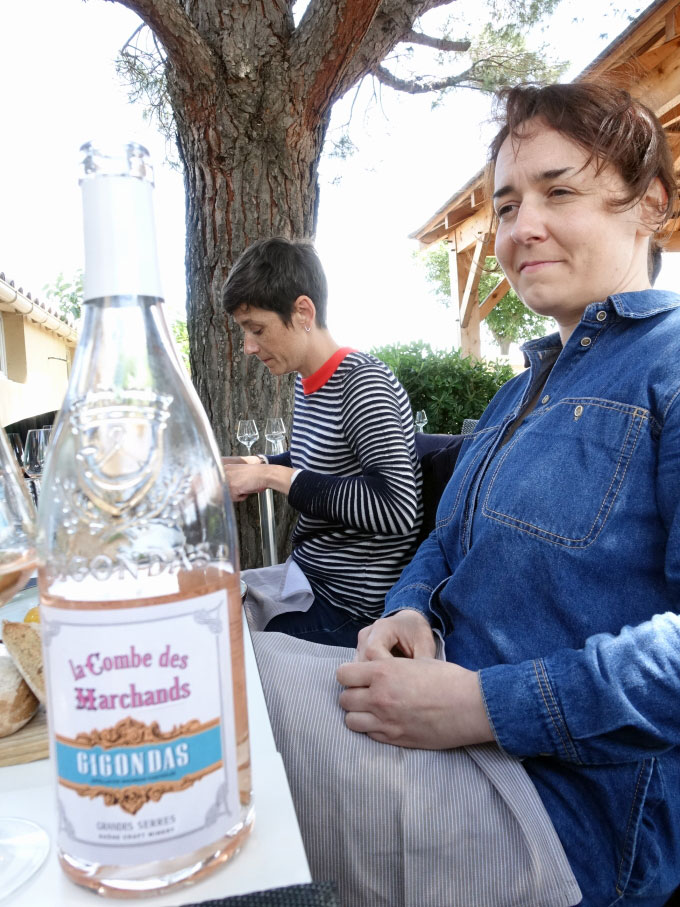


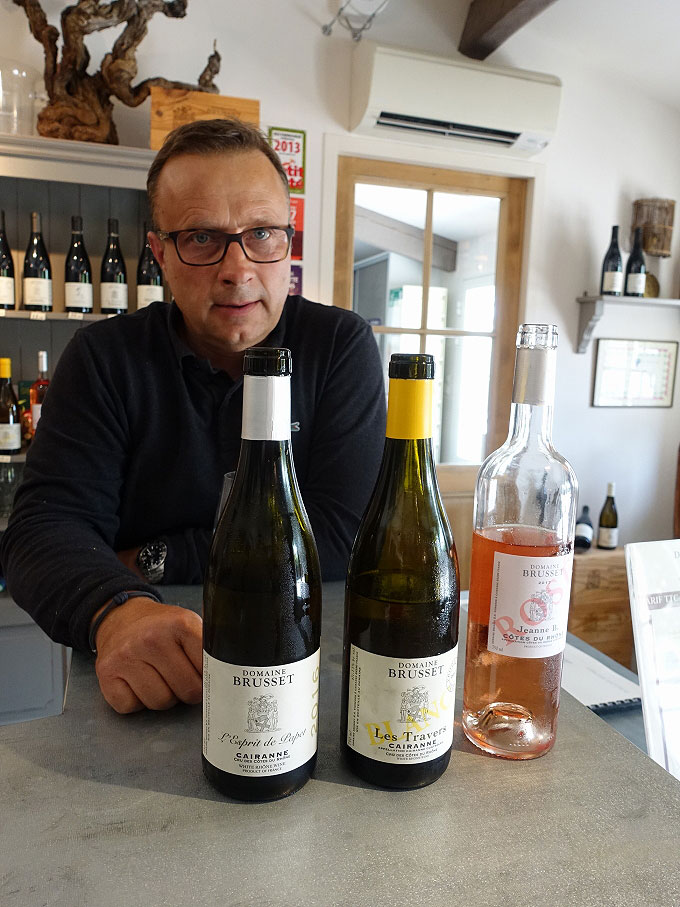

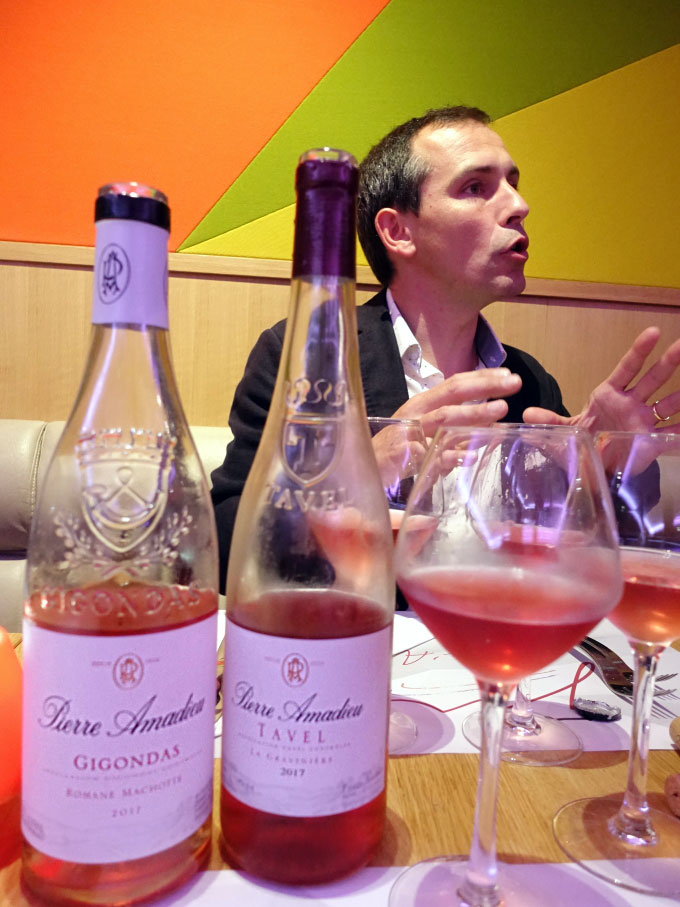

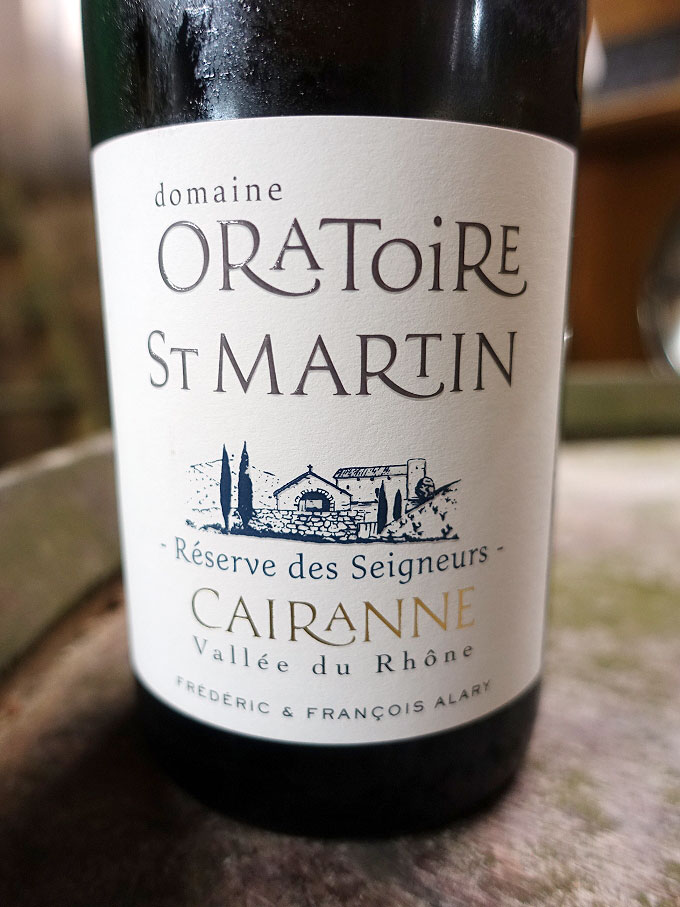
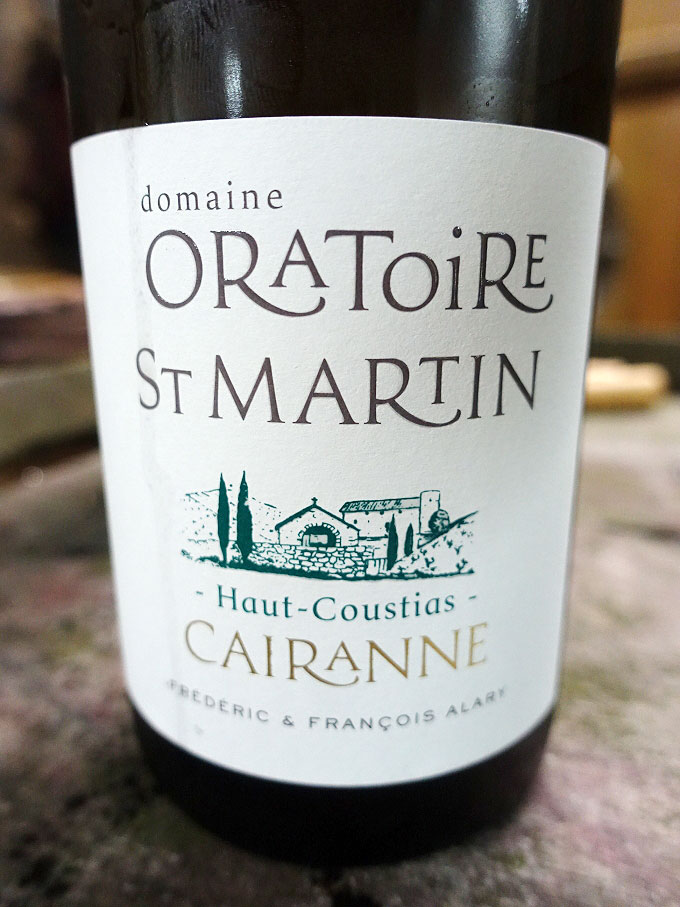


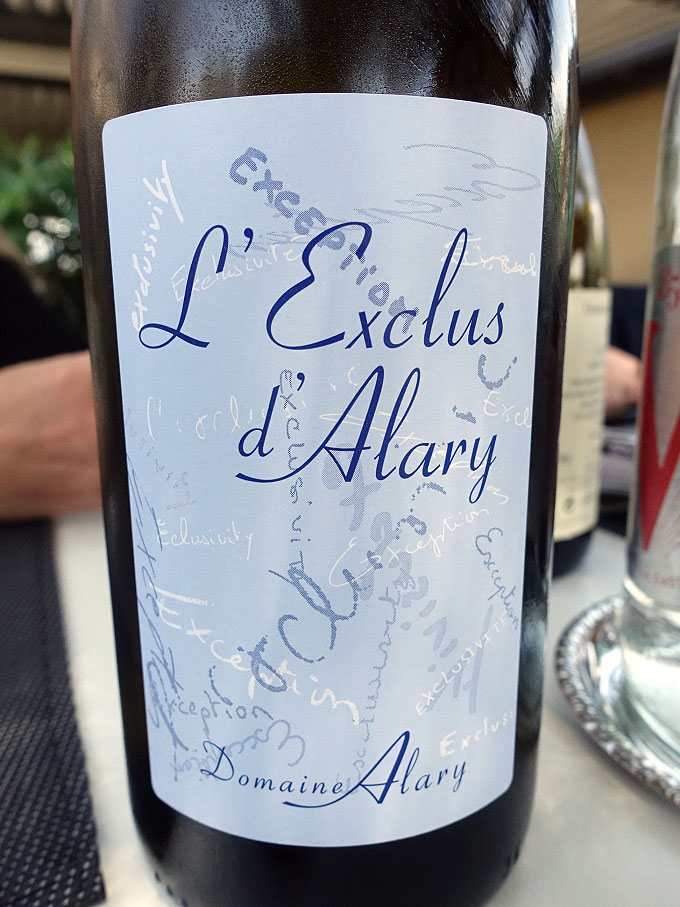





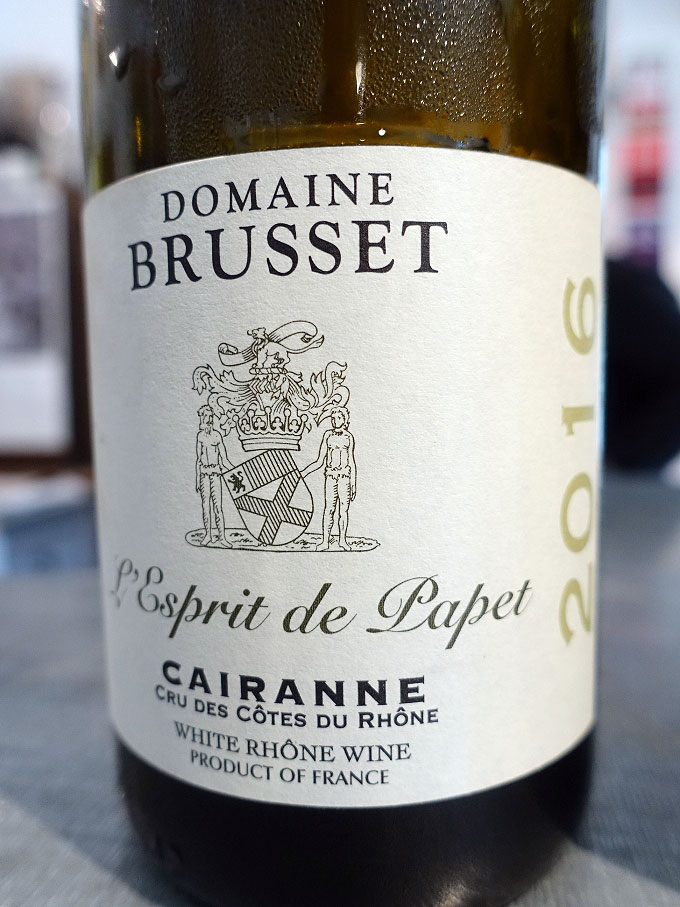









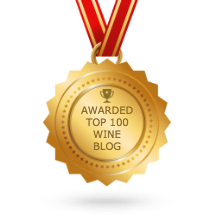
0 comments:
Post a Comment
Note: Only a member of this blog may post a comment.